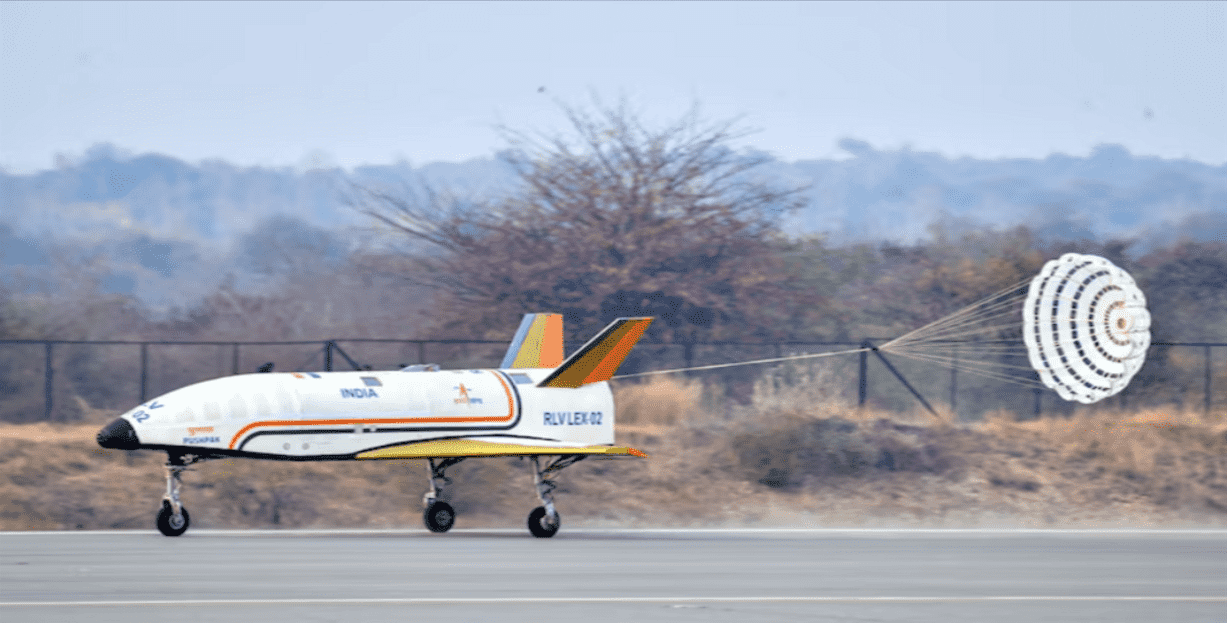From Dreams to Reality: India's Pushpak Viman Sets Sights on New Horizons

Venturing into the realms of space exploration, the Indian Space Research Organisation (ISRO) made waves on March 22, 2024, with the successful execution of the second landing experiment of its groundbreaking Reusable Launch Vehicle, Pushpak.
Drawing inspiration from the ancient epic Ramayana, Pushpak isn’t just another rocket; it’s a symbol of India’s aspirations to democratize space access, echoing the triumphs of American shuttle missions by aiming for a return journey.
The concept is straightforward yet revolutionary—make space accessible and affordable for all. To achieve this lofty goal, ISRO has been tirelessly working on indigenous technology embodied in the form of the Reusable Launch Vehicle (RLV).
Pushpak represents a pivotal step in ISRO’s grand plan to develop a fully reusable launch vehicle, with the potential to slash current space access costs by an astonishing 80%. Currently, launching a kilogram of payload into space can set you back between $12,000 and $15,000. The vision? To bring this down to a mere $500 – $1,000 per kilogram by making systems recoverable and reusable, and embracing more efficient propulsion systems like air-breathing rockets.
Enter Pushpak’s development journey, focusing on three key areas: a powerful engine, surviving re-entry, and nailing the touchdown.
First up, the engine enigma. ISRO’s scramjet engine, unlike its traditional counterparts, utilizes high-speed to compress incoming air, eliminating the need for a heavy oxidizer, thus reducing both liftoff mass and cost. The successful experimental mission of ISRO’s Scramjet engine in August 2016 validated this groundbreaking Air Breathing Propulsion System.
Surviving re-entry into Earth’s atmosphere is no small feat. ISRO’s relentless pursuit involves testing heat-resistant materials and re-entry profiles to ensure Pushpak withstands the intense heat generated by hypersonic travel.
Finally, the touchdown. Pushpak’s autonomous operation demands a precise and flawless landing on all three gears. On March 22, 2024, the RLV Landing Experiment (LEX) showcased Pushpak’s ability to autonomously handle off-nominal conditions, demonstrating its prowess in navigation, control, and guidance.
Equipped with cutting-edge navigation systems, a robust ground-based GPS alternative, and an innovative landing gear system, Pushpak represents a giant leap towards sustainable and cost-effective space exploration.
But the journey doesn’t end here. ISRO’s RLV-TD program is gearing up for further experimental flights, including the orbital return flight experiment (OREX) and the scramjet propulsion experiment (SPEX), setting the stage for the development of a two-stage orbital launch vehicle.
With its sights set on the stars, ISRO’s Pushpak mission epitomizes India’s relentless pursuit of innovation, paving the way for a new era in space exploration—one where the cosmos is within reach for all.


